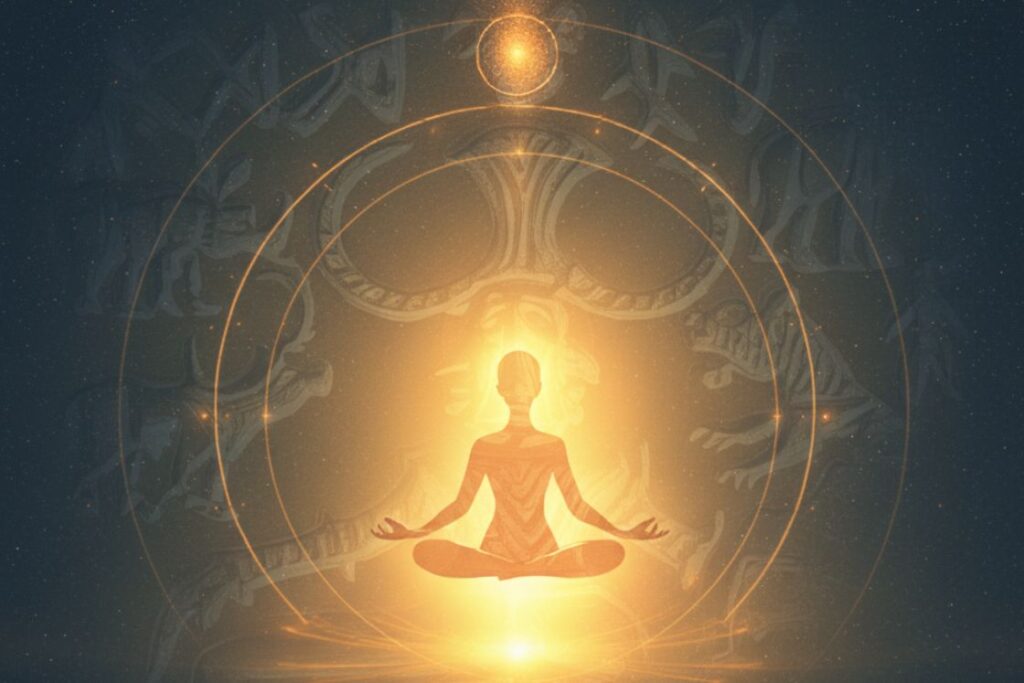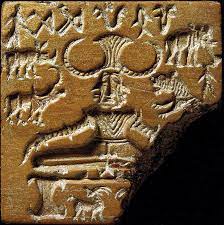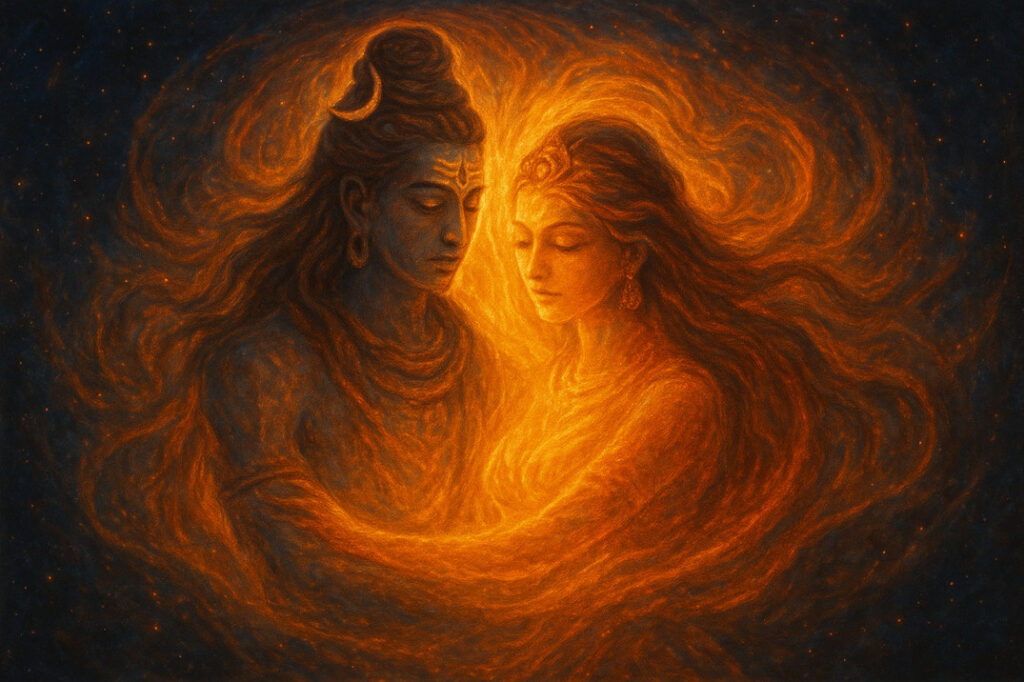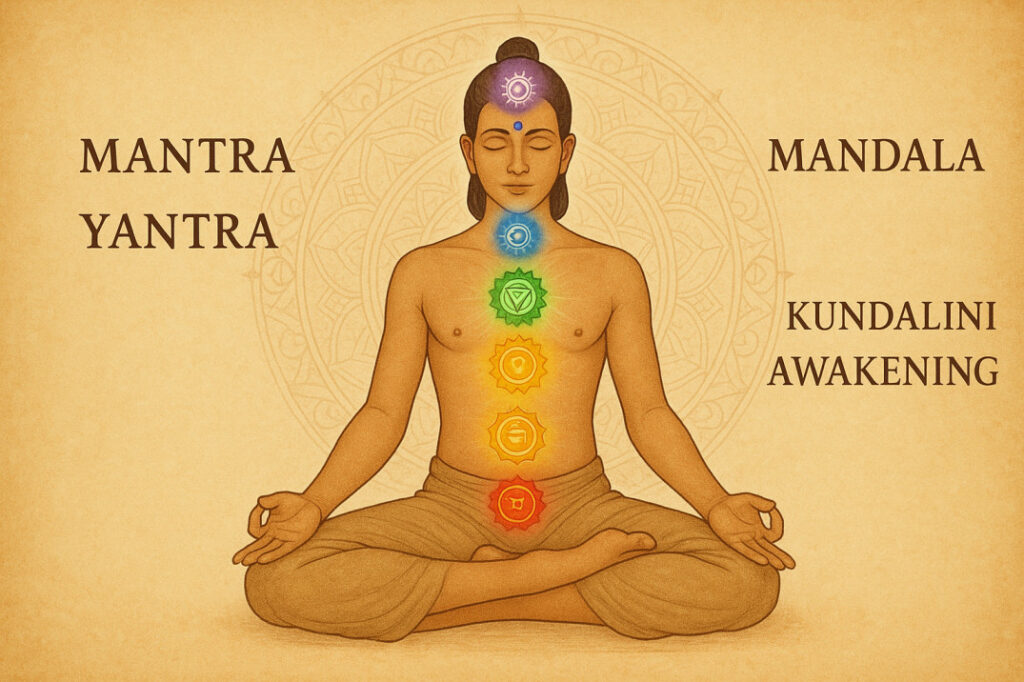
Tantra is likely one of the oldest religious techniques of India, a path the place philosophy and apply meet to information the seeker towards freedom. Its essence is hidden within the phrase itself: Tan means “to develop,” pointing to the broadening of thoughts and consciousness, whereas Tra means “to liberate,” revealing its goal of liberating the soul from the veils of Māyā (phantasm).
Not like paths that separate the religious from the worldly, Tantra teaches that each side of life; respiratory, motion, thought, and devotion can develop into a step towards awakening.
It explores tattva, the underlying rules of actuality, and gives sensible instruments resembling mantra, yantra, meditation, and ritual to deliver the practitioner into direct expertise of the Absolute.
Over the centuries, Tantra has been each revered and misunderstood. Whereas some cut back it to ritual or sensual indulgence, its true essence lies in experiencing the unity of consciousness (Shiva) and power (Shakti). Tantra is a path of consciousness, transformation, and realization, inviting the seeker to uncover the everlasting fact woven into the very material of life.
That means and core ideas of tantra
Tantra in Sanskrit carries a number of layers of which means. At its essence, it’s a structured system of information (śāstra) that guides seekers towards understanding the truths of life and actuality. Tantra explores tattva, the precept of existence, and the transformative energy of mantra, sacred sound that awakens inside consciousness. It’s not merely theoretical data however a path to direct expertise and religious progress.
On the coronary heart of Tantra is the research of tattva, which means “that-ness”—the elemental unity underlying all creation. By disciplined practices, particularly mantra sadhana, the practitioner strikes past mental understanding and straight experiences the Absolute, gaining lived, experiential knowledge.
Central to Tantra is the research of tattva, a Sanskrit time period which means “that-ness” or the elemental unity underlying all creation. By disciplined practices, particularly mantra sādhanā, the practitioner strikes past mental understanding to straight expertise the Absolute, gaining deep, lived knowledge.
The phrase Tantra itself embodies its function:
- Tan – “to develop,” pointing to the expansion of thoughts, imaginative and prescient, and consciousness.
- Tra – “to liberate,” displaying the trail of liberating the soul from the illusions and limitations of Māyā.
Collectively, Tantra is the trail of growth and liberation, the place consciousness grows whereas the spirit strikes past ignorance and bondage. and liberation, the place consciousness grows whereas the spirit strikes past ignorance and bondage.
- Tantra as a supply of religious data
Some students join Tantra to tantri, which means the origin of religious data. It serves as a framework that unfolds divine knowledge, making hidden truths accessible to honest seekers.
- Mystic and authoritative view
From a mystical perspective, Tantra helps free the thoughts from dullness and restricted consciousness. Conventional teachings say it guides the practitioner past phantasm (Māyā) towards larger consciousness and religious freedom
- Shiva and Shakti – The cosmic play
A core instructing of Tantra is the dynamic interaction between Shiva, pure consciousness, and Shakti, the inventive power of the universe. Liberation will not be about rejecting the world however recognising their union inside oneself. Each thought, motion, and expertise turns into a possibility to understand the cosmic steadiness and awaken inside power.
Be a part of our Tantra-inspired 200-hour Kundalini Yoga Trainer Coaching now
Historical past of tantra
The origins of Tantra run deep within the historic civilizations of India. Proof of Tantric affect dates again to the Indus Valley Civilization, one of many earliest centres of tradition, studying, and spirituality.

- Indus valley proof – the pashupati seal
Archaeological excavations within the Indus Valley revealed a terracotta seal displaying a determine seated in meditation, surrounded by animals. This determine, often known as Pashupati or “Lord of Animals,” is proven in a yogic posture referred to as Urdhva-mukha asana.
This identical posture is utilized in Tantra to stimulate refined power channels (nāḍīs) and awaken Kundalinī, the dormant power on the root chakra. The seal signifies that Tantric practices have been already a part of religious life within the Indus Valley, guiding the practitioner towards larger consciousness.
- Tantra in early indian traditions
As Tantra advanced, it gave rise to 2 principal faculties:
- Śaivism – centered on Shiva, representing pure consciousness.
- Śāktism – dedicated to Shakti, the inventive female power of the universe.
Each paths geared toward religious liberation, although they expressed it by totally different symbols, rituals, and practices.
- Cultural alternate – vedic and tantric streams
Traditionally, Tantra was primarily practiced by the Dravidian individuals of southern India, whereas the Vedic custom was rooted within the northwestern Aryan tradition. Over time, these streams blended, combining Vedic rituals with Tantric practices. This synthesis helped Tantra evolve past secrecy, changing into an integral a part of yoga, meditation, and devotional traditions that proceed to form Indian religious life immediately.
Philosophical foundations of tantra

Tantra is greater than rituals or practices; it’s a systematic philosophy exploring the character of actuality and consciousness. Its research guides the seeker to grasp the universe by the 36 tattvas, the interaction of power and consciousness, and the sensible instruments like mantra, meditation, and ritual that join the practitioner to the divine.
- The 36 tattvas – parts of creation
In Tantric thought, the universe consists of 36 parts (tattvas), protecting each bodily and refined dimensions of existence. Whereas the 5 classical parts earth, water, hearth, air, and area are acquainted, Tantra teaches that these are the fruits of 31 subtler tattvas.
Every tattva carries the essence of cosmic unity, unfolding from the singular absolute precept. By finding out these tattvas, the practitioner learns to:
- Perceive the construction of actuality, from refined to gross.
- Recognise the divine essence inside all parts of creation.
- Instantly expertise the energies that type the universe.
- Mantra, yantra, and mandala – instruments of transformation
Tantra supplies sensible strategies to have interaction with these cosmic rules:
- Mantra – Sacred sound vibrations that awaken consciousness and align inside power with the common rhythm.
- Yantra – Geometric diagrams used as meditative aids to focus the thoughts and understand divine order.
- Mandala – Symbolic representations of the cosmos that help visualisation and meditation.
These instruments will not be mere symbols; they’re devices of transformation, guiding the practitioner from restricted notion to expanded consciousness.
- Monistic philosophy – oneness of actuality
Tantra follows a monistic worldview, viewing all of actuality as rising from a single cosmic supply. Not like dualistic techniques that separate consciousness and matter, Tantra sees variety because the expression of 1 underlying precept. Every of the 36 tattvas displays this unified cosmic essence.
- Shiva and shakti – consciousness and power
In Tantra, the final word actuality is the union of Shiva (pure consciousness) and Shakti (dynamic power). Each creation, life expertise, and phenomenon is considered because the play of those two rules, guiding the practitioner towards the conclusion of the Absolute inside. Religious practices concentrate on experiencing this union internally, remodeling abnormal experiences right into a path of religious progress and liberation.
Tantra in apply

Tantra will not be restricted to scriptures or philosophy; it’s a residing path that transforms data into direct expertise. Its essence lies in making use of rules by sādhanā (religious apply). These practices harmonize sound, type, power, and consciousness, guiding the practitioner towards inside realization and liberation.
Mantra Sadhana – the ability of sound
On the coronary heart of Tantric apply lies mantra sadhan. Mantras are greater than phrases—they’re vibrations infused with religious power. Chanting or meditating on a mantra awakens inside power, purifies the thoughts, and connects the practitioner with larger consciousness. With constant apply, a mantra turns into a bridge between the person self and the cosmic self.
Kundalinī awakening – the rise of inside power
A central side of Tantra is the awakening of kundalinī shakti, the dormant religious power resting on the base of the backbone. When woke up, this power rises by the chakras (power centres), increasing consciousness and resulting in the realisation of Shiva-Shakti unity throughout the physique. Kundalinī awakening represents a direct expertise of divine consciousness.
Rituals and worship – aligning with the cosmic
Tantra employs rituals that symbolically and energetically align the practitioner with common forces. These embrace:
- Yantra worship – Utilizing sacred diagrams to focus the thoughts and understand cosmic order.
- Puja (ritual providing) – Making a sacred area to channel divine presence.
- Mudra and Nyāsa – Hand gestures and physique placements to invoke refined energies.
These rituals will not be carried out for exterior acquire; they’re inside applied sciences for remodeling consciousness and refining notion.
Meditation and visualisation
Tantric meditation typically includes visualizing deities, yantras, or mandalas, guiding the thoughts to understand the underlying cosmic order. Specializing in these symbols helps dissolve the boundaries of the ego, permitting the practitioner to expertise a way of unity with the cosmos.
Each day life as sadhana
A singular side of Tantra is its instructing that each a part of life can develop into sādhanā (religious apply). Consuming, respiratory, relationships, and even each day work might be remodeled into alternatives for progress, bridging the abnormal and the sacred. Tantra exhibits that liberation will not be separate from life—it’s woven into each second. By recognizing the sacred within the on a regular basis, practitioners combine spirituality seamlessly into each day residing.
Tantra and liberation
At its core, Tantra is a path of liberation. Each instructing and apply is designed to free the person from Māyā—the veil of phantasm, ignorance, and limitation that binds consciousness.
- Liberation from Crudeness and Ignorance
Tantra recognises that abnormal human expertise is commonly trapped in jadatā a state of unrefined or crude consciousness. This contains attachment to materials possessions, the ego, and primary life instincts. By constant Tantric sādhanā, the practitioner step by step transcends these limitations, cultivating refined consciousness and a refined notion of actuality.
- Growth of consciousness
The very phrase Tantra displays its essence: Tan—the growth of thoughts and consciousness, and Tra—the liberation of the soul. Practices resembling mantra meditation, kundalinī awakening, yantra visualization, and ritual sādhanā assist unblock latent energies, guiding the practitioner from restricted materials consciousness to a broader, cosmic consciousness.
- Realisation of tattva – absolutely the
The last word goal of Tantra is the conclusion of tattva, absolutely the precept underlying all creation. Each ingredient, power, and expertise is considered as a mirrored image of this cosmic unity. By recognizing the divine essence inside oneself and all existence, the practitioner enters a state of liberation the place the boundaries between self and cosmos dissolve.
- Liberation as direct expertise
Tantra emphasises first-hand expertise over mere mental data. Religious knowledge will not be solely studied however lived. Liberation will not be a distant concept however a tangible shift in consciousness, a direct awakening to the reality of existence.
- Past powers and achievements
Though Tantra might produce siddhis (religious powers) as by-products, it cautions towards attachment to them. True liberation lies past dazzling accomplishments, focusing as a substitute on freedom of consciousness and soul from Māyā.
Widespread misconceptions about tantra
Regardless of its lengthy historical past and depth, Tantra is commonly misunderstood, even by those that have heard of it. Many in style beliefs solely present a small fragment of its true function.
- Tantra isn’t just ritual or magic
Some individuals mistakenly suppose Tantra is barely about elaborate rituals, magical powers, or esoteric ceremonies. Whereas rituals, mantras, and yantras are a part of the apply, their true function is inside transformation, not exterior show or private acquire. Tantra guides the practitioner towards expanded consciousness and liberation, not mere spectacle.
One other widespread false impression is that Tantra promotes indulgence in sensual pleasures. In actuality, true Tantric apply views the bodily and worldly life as a medium for religious progress. Each motion even each day routines can develop into a step towards self-realization when approached with consciousness and self-discipline.
- Siddhis are by-products, not targets
Many affiliate Tantra with the pursuit of siddhis, or religious powers. Whereas such skills might come up, they aren’t the aim. Tantra teaches that attachment to those powers can strengthen the ego and materials needs, conserving the practitioner from attaining true liberation.
- Tantra is private and experiential
Some see Tantra as a inflexible algorithm or summary philosophy. In reality, it’s extremely private. Every practitioner experiences Tantra in their very own means, guided by scriptures, lecturers, and inside perception. Its knowledge is supposed to be lived, not merely studied or theorized.
Conclusion
Tantra is an entire system of information and apply that guides the seeker towards religious liberation. Rooted in historic traditions and built-in with Vedic knowledge, it awakens inside power, expands consciousness, and divulges the union of Shiva (pure consciousness) and Shakti (dynamic power). By mantras, yantras, meditation, and kundalinī practices, each side of life can develop into a step towards freedom, heightened consciousness, and direct expertise of the Absolute.
